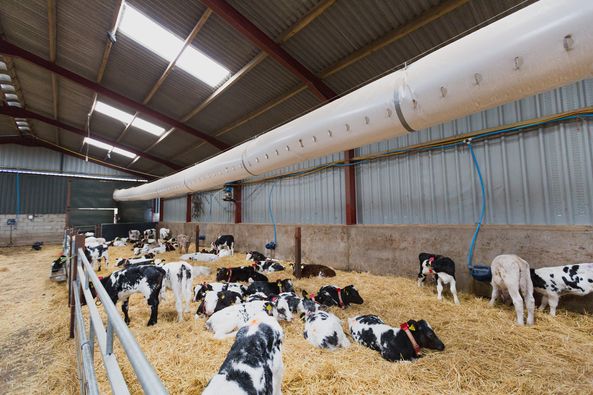Reducing Heat Stress
Dairy cows are affected by heat stress during hotter months. The comfort zone for a cow is between 4-20°C, much lower than the comfort zone of a human.
Cause
- Heat stress occurs when an animal's heat load is greater than its capacity to lose heat. Cows feel hot sooner than we do.
- High air temperature, humidity, solar radiation and low air movement contribute to increased risk.
- High relative humidity decreases evaporation and reduces the cow's ability to lose heat by sweating and breathing.
- When air temperature is greater than about 21ºC and relative humidity is greater than 70%, Friesians and crossbreeds begin to reduce their feed intake, and milk production is reduced. Jerseys are more tolerant of heat, with production losses insignificant until 25ºC.
- Cows radiate heat during the night to the cooler surroundings. Warm cloudy nights can reduce cooling, increasing the risk of heat stress.
Symptoms
As in humans, cows are likely to experience headaches, irritability, and lethargy when they are too hot and have insufficient water. To cope with heat, cows use a variety of strategies including:
- increased breathing rate and sweating.
- increased water intake.
- decreased feed intake and,
- decreased milk production.
- change in milk composition, e.g., fat % and protein % declines.
- change in blood hormone concentration, e.g., increased prolactin.
- changed behaviour:
- seek shade.
- crowd together to shade each other.
- refusal to lie down.
- change orientation to sun.
- stand in water or next to water troughs.
We have partnered with the leading supplier of ventilation systems and it is all UK made! To find out more on how you can help manage heat stress in your animals, contact either David Quance - 07395 498175, or Andrew Jones - 07717 44288. *Information care of Dairy NZ.
Recent Articles
- Silage Sheet Prices Available!
- Are Your Cows at Risk of Grass Staggers?
- Feed Late Afternoon and Calve in Daylight Hours!
- Q Fever
- Aerating Your Soil Without A Machine? – Gerard Finnan
- Why Are You Not doing a Soil Management Plan?
- What are the Rule Changes for Urea Fertiliser in April?
- Robotic and Automatic Technology Grant (as part of the Improving Farm Productivity Grant (ROUND 2)
- Stage 1 of the Improving Farm Productivity Grant Now Open!
- To Roof or Store, That is the Question?

